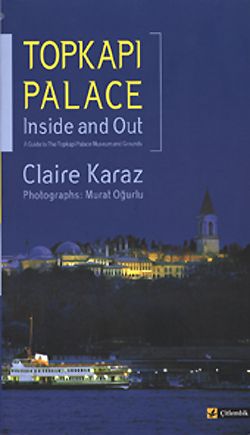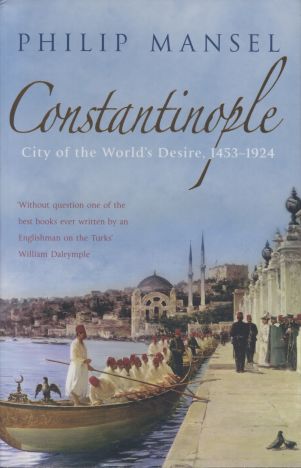Buy or gift a stand-alone digital subscription and get unlimited access to dozens of back issues for just £18.99 / $18.99 a year.
Please register at www.exacteditions.com/digital/cornucopia with your subscriber account number or contact subscriptions@cornucopia.net
Buy a digital subscription Go to the Digital EditionThe Harem is the secret heart of Topkapı, where the sultan’s concubines were ruled over by the sultan’s mother and protected by eunuchs. Originally a maze of some 400 rooms, today the visitor will see a small part of it, with narrow alleys and courtyards that still evoke intrigue. A review of the show, “Harem Secrets” by the Ottoman Historian Caroline Finkel can be found in Issue 48 of Cornucopia.
Most of the sultans’ privy chambers and pavilions in the Topkapı Harem are closed to the public and will remain so until ways can be found to exhibit them sensitively – no mean feat given the fragility of the murals, the gilded fretwork, and the rush flooring that once protected precious carpets from damp and friction.
Cornucopia was allowed to tiptoe through two of the privy chambers at the palace built by sultans for themselves and their families rather than for public show. Filling out the picture of how life was lived in this inner sanctum, the palace museum organised an exhibition this summer (2012) of some 300 related objects, entitled Harem: The House of the Sultan. The book of the exhibition contains useful essays on the history of the Harem, and how it was built and added to, layer upon layer, over the centuries, until they ran out of room and had to build huge platforms and terraces out over Gülhane Park, literally creating pavilions in the air.
Mehmed II started building the Topkapı, on the site of the old Byzantine acropolis overlooking the Golden Horn and the Sea of Marmara, in 1459, sixe years after his conquest of Constantinople. Known as the New Palace until the 19th century, when it acquired the name of Topkapı (Cannon Gate), it is not a palace in the traditional European sense but a complex of low buildings and pavilions, kiosks and courtyards, to which Mehmed II’s successors continued to add.
For almost 400 years it was the principal residence of the Ottoman sultans, as well as the seat of government and setting for state occasions and royal entertainments. It was a self-contained city that most of the inhabitants rarely left.
Few places are so shrouded in myth as the Harem of the Topkapı Palace in Istanbul. Travellers longed for a glimpse of what went on within its well-protected walls, and European artists gave rein to their fantasies in flamboyant paintings.
In recent years the Harem has been refurbished and sections previously hidden from public view have been opened up, but it is bereft of life and of the myriad objects that sustained it. The present exhibition showcases sumptuous and everyday things, both those used by high-status women – princesses and the sultan’s concubines – and those of the slave women who served them.
These include seals, garments and textiles, boxes, jewellery, combs and mirrors, cradles and toys, writing implements, saddles and archery bows, musical instruments, Chinese bowls, vases and flasks, chess sets and shadow puppets.
The exhibition also features portraits of sultans who influenced the architecture of the Harem. Although there has not been a full architectural survey of the precinct, the main phases of its development are understood. Contrary to the conceit of the popular TV soap Muhteşem Yüzyıl (Magnificent Century), the sultan’s women remained in the city-centre palace built by Mehmed the Conqueror, until the 1540s, when Süleyman I merged his private and public household (already at the Topkapı), and building began in earnest.
Fifty years later, Murad III greatly extended the Harem and transformed it into a key state institution headed by the Chief Black Eunuch. A miniature showing the first incumbent, Habeşi (Ethiopian) Mehmed Ağa, before Sultan Murad, comma is displayed alongside documents hinting at the extensive financial responsibilities that made this office so powerful.
The catalogue misleadingly refers to all Harem women as “concubines”, a term properly used for women who had sexual relations with the sultan. One who most certainly did was Hürrem Sultan, whose passion is on display in a letter to her husband, Süleyman. We also see a moving plea from his half-sister, Fatma Sultan, to their father, Selim I, to be released from marriage to a brutish husband. Every time a document from the Ottoman court is published, we can sense the degree to which more generous access to the palace archive will fundamentally change our understanding of the dynasty.
The wealth of previously unseen things brought out from the palace depots humanises the Harem’s long passages and cheerless reception rooms. It is an art historian’s exhibition and focuses on the objects themselves – although they are uninventively displayed – rather than on the history of the Harem as a political force. Informative essays and explanatory notes in the lavish catalogue (in Turkish and English) are written by those who know the place best, the curators of the palace collections. As we roam the empty spaces of the Harem today, we can now better imagine the vibrant life that was lived there and the women for whom it was their whole world.


 Issue 66, December 2023
Turkey’s Centenary Issue
Issue 66, December 2023
Turkey’s Centenary Issue

Cornucopia works in partnership with the digital publishing platform Exact Editions to offer individual and institutional subscribers unlimited access to a searchable archive of fascinating back issues and every newly published issue. The digital edition of Cornucopia is available cross-platform on web, iOS and Android and offers a comprehensive search function, allowing the title’s cultural content to be delved into at the touch of a button.
Digital Subscription: £18.99 / $18.99 (1 year)
Subscribe now